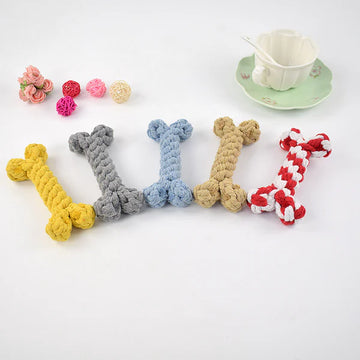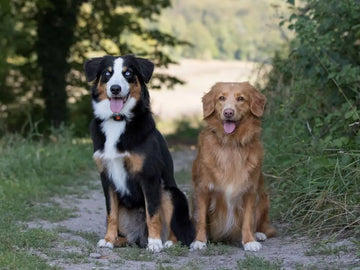If you’re a dog owner, chances are you’ve experienced this heartwarming behavior: your dog trots over with a toy in their mouth, tail wagging, looking at you with bright, eager eyes. They may nudge the toy toward you or drop it at your feet, as if to say, “This is for you!” But have you ever wondered why dogs do this? There’s more to this behavior than simple playfulness—it’s a complex mix of instinct, emotion, and communication.
In this article, we’ll explore the reasons behind why dogs bring toys to their owners, and what it can reveal about your relationship with your pet. By understanding this endearing habit, you can strengthen your bond with your dog and learn to interpret their unique ways of expressing affection.
Dogs and Their Love for Toys
Dogs love toys, but they’re not just for play; toys also fulfill a dog’s need for mental stimulation, physical exercise, and comfort. For many dogs, toys are an essential part of their daily routine, providing both entertainment and a sense of security. Dogs often form attachments to particular toys, which can become a part of their “treasure trove” that they like to share with you.
Natural Instincts and Pet Toys
Domesticated dogs have inherited some instincts from their wild ancestors, such as the drive to hunt and retrieve. Pet toys often satisfy these urges, allowing dogs to chase, catch, and “own” something in a safe environment. When your dog brings you a toy, they may be following a deep-rooted instinct, treating the toy like a “prey” item that they want to share with the pack leader—you. This behavior taps into their wild roots while also signaling trust and social bonding.
Why Dogs Bring You a Toy: Key Reasons Behind This Behavior
Invitation to Play
The most straightforward explanation is that your dog wants to play. Bringing you a toy is their way of initiating a fun interaction, whether it’s a game of fetch, tug-of-war, or chase. If your dog has a preference for certain types of toys, like balls or plushies, they may specifically choose these to get the type of playtime they enjoy most. Interactive playtime with their favorite toys can be especially beneficial, as it provides both physical and mental stimulation.
If you're looking to keep your dog entertained and engaged, consider incorporating best interactive puppy toys into their playtime. These toys are designed to stimulate your dog's mind and keep them interested for longer periods, reducing boredom and strengthening the bond between you.
Displaying Affection and Trust
In the world of dogs, sharing possessions isn’t just about play—it’s also a way of showing affection. By bringing you a toy, your dog might be demonstrating their trust and love, particularly if it’s a favorite toy. Dogs tend to form emotional attachments to specific objects, and sharing something valuable to them is like a friend offering you their most prized possession. This behavior is particularly common with dogs who are close to their owners and see them as part of their pack.
Seeking Attention and Companionship
Sometimes, dogs bring toys as a way to seek attention or to initiate interaction. Dogs are very social animals and crave the companionship of their human family. If your dog notices that bringing you a toy often results in a game or some quality time together, they’ll repeat this behavior to get more of your attention. This can be especially common if your dog feels you’ve been busy or distracted, as they’ll do whatever it takes to bring the focus back to them.
Satisfying Their Instinct for Problem-Solving
For dogs that are highly intelligent or energetic, the act of bringing you a toy can be a way to engage in a problem-solving activity. In the wild, animals often have to work for their food or entertain themselves by exploring and finding resources. While domesticated dogs don’t face the same challenges, certain toys—like a dog puzzle toy—can help stimulate these natural problem-solving instincts. When your dog brings you a puzzle toy, they may be hoping for your help to tackle the challenge together or simply showing off their "prize."
These toys, which typically have hidden compartments or moving parts, provide excellent mental exercise for dogs, helping to keep their minds sharp and engaged. They’re also great for solo play, which can be useful for dogs that spend a few hours alone each day.
How to Respond When Your Dog Brings You a Toy
When your dog brings you a toy, there are several ways to respond that can reinforce positive behavior and strengthen your bond.
Engage in Play
If you have the time, accepting your dog’s invitation to play is a wonderful way to show them you appreciate their gesture. Playtime with your dog is essential for their mental and physical well-being, providing an outlet for their energy and stimulating their mind. Regular play sessions with interactive toys can help you maintain a happy, healthy, and well-adjusted dog.
Reward Their Gesture
Even if you can’t engage in a full play session, acknowledging your dog’s behavior is important. Giving them a treat, a pat, or some verbal praise reinforces that bringing you a toy is a positive action. This can be especially helpful in training young puppies, as it encourages them to engage with you in constructive ways.
Use It as a Training Opportunity
When your dog brings you a toy, you can incorporate basic training commands like “drop it” or “give” to reinforce obedience. This moment can also be used to teach them to fetch specific items or follow certain commands, making the interaction fun and educational.
Understanding the Types of Toys Dogs Bring
The type of toy your dog brings you can also give insight into what they might be trying to communicate.
Plush and Soft Toys
Dogs that bring you soft toys may be seeking comfort or displaying a nurturing instinct. Soft toys can act as “comfort objects” for dogs, especially if they’re left alone during the day. These toys often have scents or textures that your dog finds soothing, and by bringing one to you, they may be asking for reassurance or affection.
Squeaky Toys
Squeaky toys tap into a dog’s predatory instincts, as the sound mimics the high-pitched noises made by prey animals. If your dog brings you a squeaky toy, they may be feeling playful and energetic. This type of toy encourages active play, and many dogs enjoy the sense of accomplishment that comes with making the toy “squeal.”
Balls and Retrieving Toys
Dogs that bring you balls or frisbees are often ready for high-energy games like fetch. This behavior is typical in breeds with strong retrieving instincts, such as Labradors and Retrievers. For dogs that need a lot of exercise, a simple game of fetch with their preferred ball can provide hours of physical and mental stimulation.
Conclusion
A dog bringing you a toy is a gesture that embodies trust, companionship, and a desire for interaction. Whether they’re inviting you to play, showing affection, or simply seeking comfort, this behavior is a reminder of the unique bond you share with your canine friend. By responding positively to your dog’s toy-offering habit and incorporating various toys—like best interactive puppy toys and dog puzzle toys—you can enhance their physical health, mental engagement, and overall happiness.
Understanding and acknowledging these gestures deepens your connection with your dog and provides insight into their emotional needs. So the next time your dog brings you a toy, embrace the moment, appreciate the gesture, and perhaps, join them in a playful adventure.











